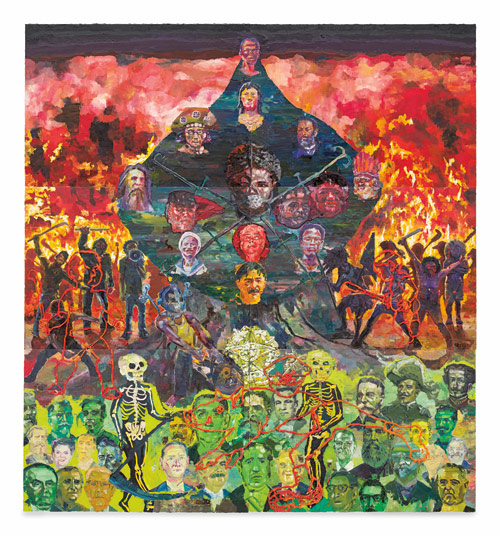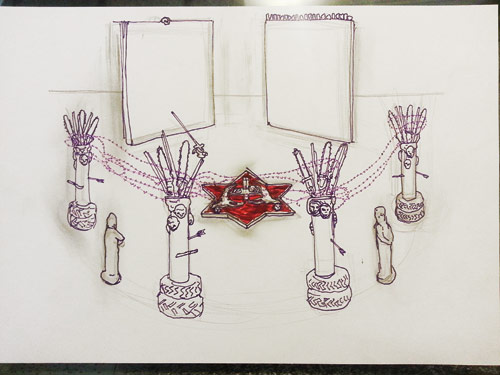2014
Thiago Martins de Melo

‘Flesh is the reason oil painting was invented.’ This quote from Willem De Kooning is presented by Thiago Martins de Melo as the key to understanding his relationship with painting, made of visually elaborate allegories that are always punctuated by opposing factors, like the feminine and the masculine, the sacred and the profane, the intimate and the public. Still, in his work, the coexistence of opposites – aside from calling attention to the ambivalent nature of the human condition, such as that of the seventeenth-century Baroque – addresses the religious and cultural syncretism that characterises the history of Latin America’s colonies and structures their contemporary societies, like in Brazil.
In Martírio [Martyrdom], oil paint is truly flesh, taking on mass and extrapolating the thickness of the canvas, as if the painting were violent, or violated. The piece combines sculptures, taking on the form of an installation, a setting which can be entered. It also carries the logic of a painting, but takes the form of a threshold, a space between the entrance and the inside, neither here nor there: a purgatory. Martírio is an overview of the Amazon: ‘a landscape on the periphery of the international capital’, in the artist words, referring to the role that the forest plays in an economy of exploitation which, since the arrival of Portuguese colonists in 1500, has changed in configuration, but never been overcome.

The piece pays homage to the martyrs of the Amazon, hundreds of workers and community leaders who died anonymously in the fight to defend the land. A virgin landscape and the image of Carajás as a large desert: the result of extractive trends which, to this day, remain hungry for its natural resources, framed by a fence of columns imposed by the civilisation process. This is the setting for the encounter between two caboclos who follow Vodum, an African religion that draws followers to São Luís, the artist’s hometown. Its presence is one of protection as well as conflict, two sensations the installation aims to make spectators feel in their own flesh. – AMM